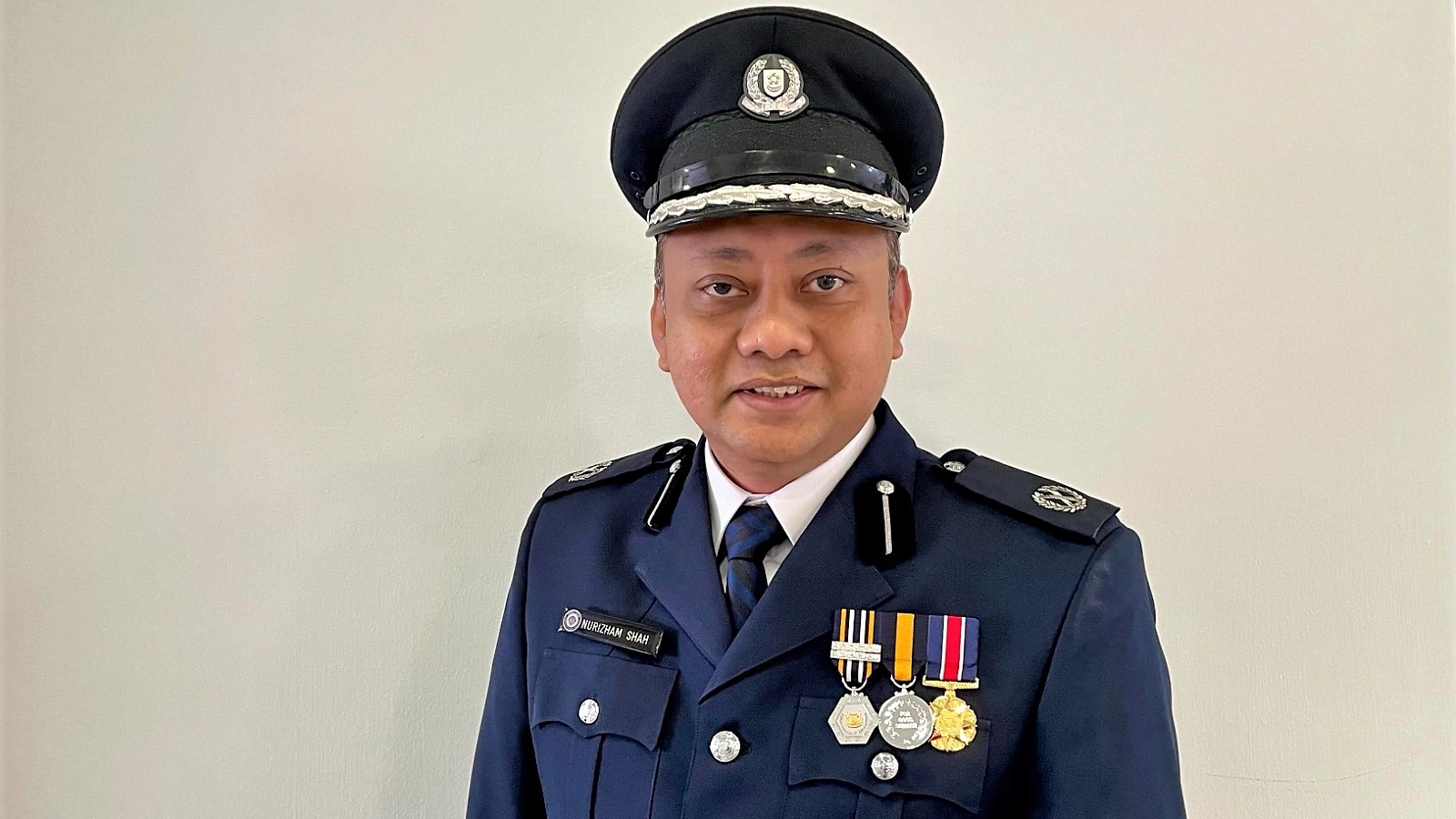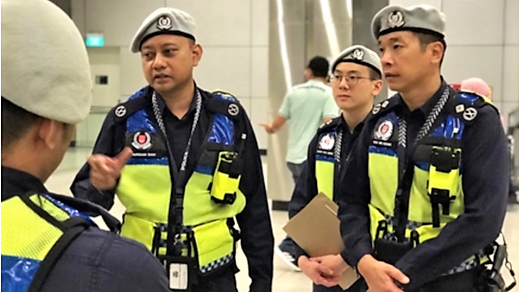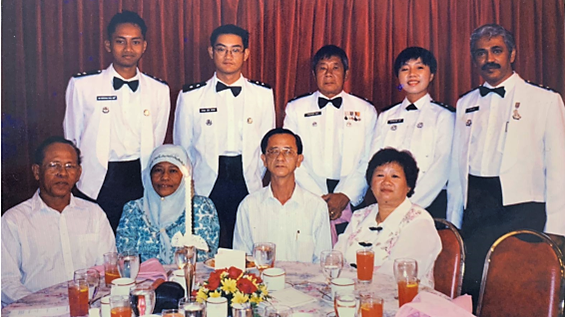
DAC (NS) Mohammad Nurizham Shah Bin Abdullah reflects on how the Singapore Police Force has evolved and what keeps him going in his service.
TEXT: KEENAN PEREIRA
PHOTOS: DAC (NS) MOHAMMAD NURIZHAM SHAH BIN ABDULLAH
A quarter of a century: That’s how long DAC (NS) Mohammad Nurizham Shah Bin Abdullah has served in the Singapore Police Force (SPF) — first in Jurong Police Division and now as the NS Commander of the Public Transport Security Command (TransCom). During his time in TransCom, he has seen countless NSmen step up to serve their country as well, with the unit holding one of the highest numbers of NSmen within the SPF.
“As a NS-Heavy Unit, comprising about 80% full-time NS officers, this unique proportion means that TransCom is well-placed to showcase the values which NSmen can bring to the Force,” explained DAC (NS) Shah, 48. “In some ways, the National Service officers run the entire operation,” he added. The regulars play a supervisory role, while most of the NS officers are deployed for foot patrol and is a common sight at Singapore’s public transport networks, from MRT stations to bus interchanges.
There are also other vocations for the NSmen in TransCom. A handful of them are deployed in the TransCom’s Provost division, which maintains discipline among officers. Some of them serve as trainers within TransCom, equipping fellow men with self-defence and security knowledge. There is also a team that provides administrative support to ensure operations run smoothly, as well as a Community Policing Unit which works closely with members of the public to ensure the success of initiatives such as the Riders-on-Watch (ROW) that taps on commuters to deter and detect crimes.
FINDING THE GOOD

Regardless of vocation, DAC (NS) Shah has a simple mantra for his men in maximising their time during their in-camp training (ICT): Positivity. “I look at ICT as a way of looking to improve ourselves,” he said. “It would be a shame if people booked in and just switched their minds off because there’s so much to gain from ICT. Coming back for In-Camp Training also remind my officers of their obligation towards national defence and protecting essential service that serves the community.”
Top of the list is physical fitness. He added that being active in NS has helped him maintain his fitness through the years. “My siblings are around my age, but I’ve seen them grow much more … sideways,” he laughed. “Seeing my men in their late 20s and 30s give it their all during physical training inspires me to do the same. I’m glad that I can still run, even though I’m pushing 50.”
Another often overlooked perk of being an active NSman is career growth. “When you come back for ICT, it’s like a big networking mixer. You’ll be able to cross paths with people from many industries and that can help your career,” explained DAC (NS) Shah, who works in the telecommunications sector.
There’s also the benefit of bonding with the men that you’ve grown up with. “ICT is marked by division competitions, which can be a fun way to show off your talents, be it in shooting, running or even dragon boating.” DAC (NS) Shah recalled how one of his men, who was not very athletic, stood up to proudly represent his unit in a darts competition. “He volunteered because he wanted to give back to his unit and that was heart-warming.”
GROWTH AND GAINS

DAC (NS) Shah is a valuable repository of the Force’s history and heritage. Take for example the evolution of the weapons and arms that police officers carry. DAC (NS) Shah candidly shared why each iteration was better than the last. “When I started 25 years ago, officers were issued with a Smith & Wesson revolver, which was changed to the Taurus M85 revolver in 2002.”
He recalled this switch was welcomed by officers because of the laser pointer that came with the Taurus M85, ensuring a more accurate shot. And last year, the standard-issue weapon was changed to a Glock 19 Gen 5 pistol, which can carry up to three times more rounds than its predecessor. It also came with a safety mechanism that prevents accidental discharge.
Changes were also made to the rusty batons that police carried. In 2001, the metallic T-baton was introduced to replace the previous metal baton. The metallic T-baton was then replaced by a lightweight extendable baton in 2019. Apart from improvement to equipment, he also witnessed the transformation of TransCom to deal with the changing operating landscape, expansion of transport network, and competing demand for resources. This includes operationalisation of TransCom Woodlands sub-base in 2019 and the implementation of new initiatives such as empowering NSmen to take on more leadership roles in leading anti-crime rounds and community engagement with ROW volunteers.
Importantly, changes to the Force’s hardware have been accompanied by changes to its software. “Today’s police officers are much more skilled at engaging members of the public. This is especially true for TransCom officers, as we are regularly on the ground and in public spaces. It’s an encouraging sign as we value our partnership with the public.”
Like our stories? Subscribe to Frontline Digital Newsletters to get your bi-weekly dose of new content!

